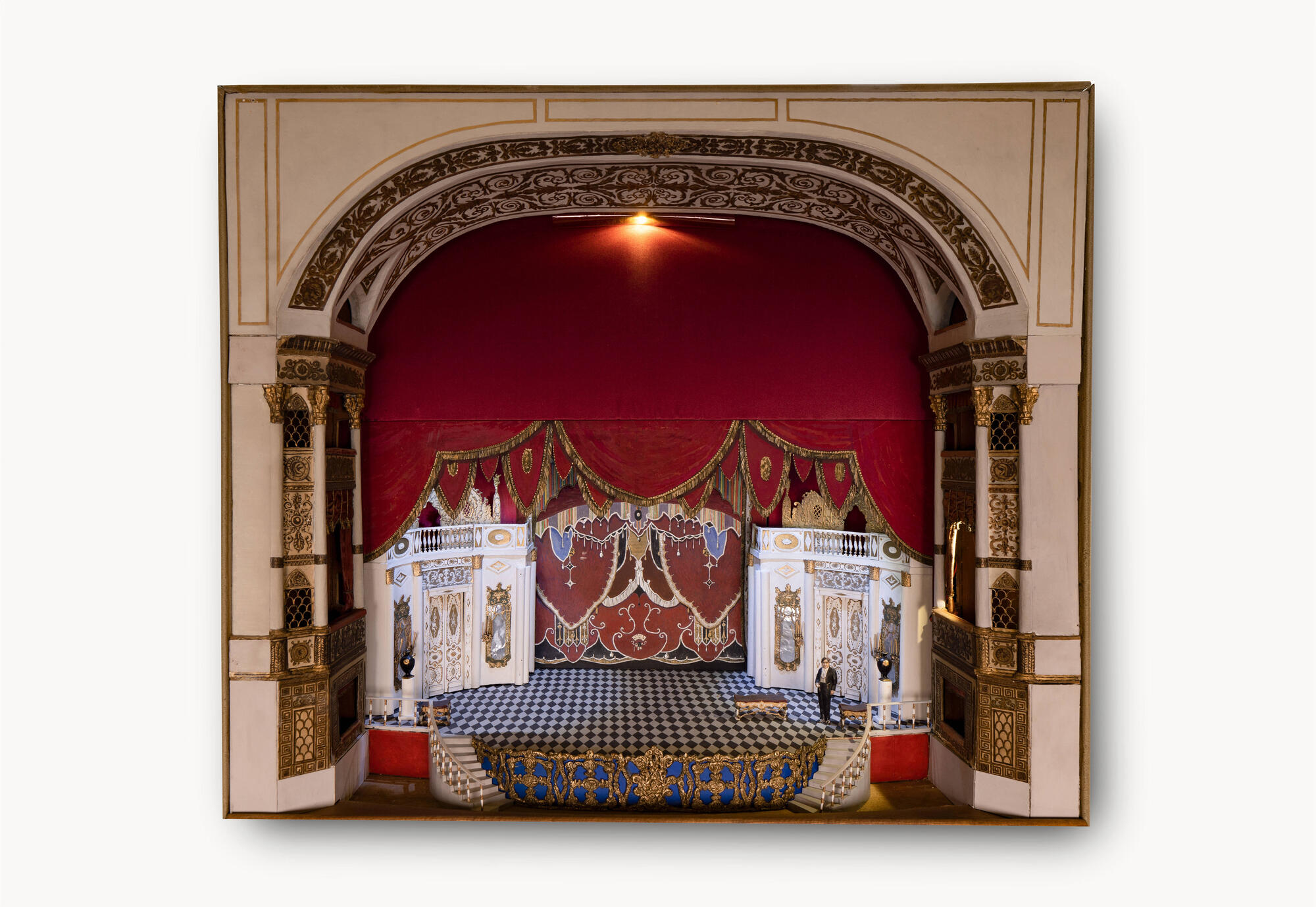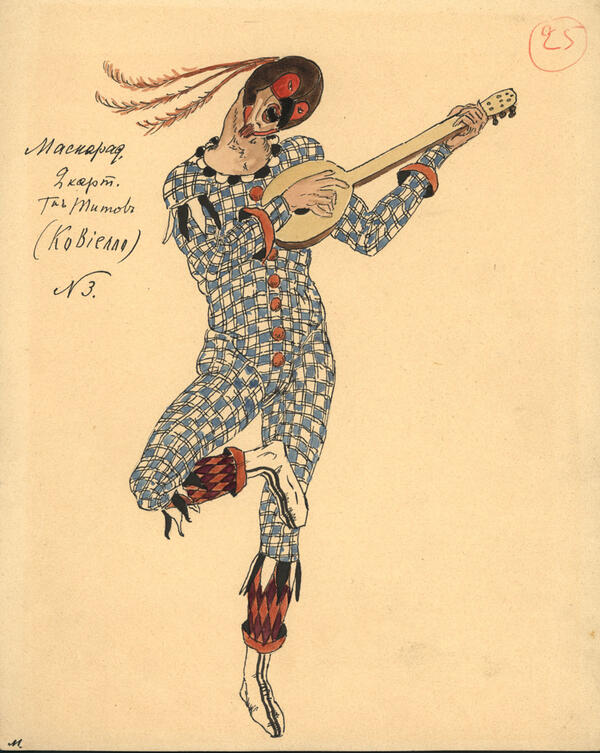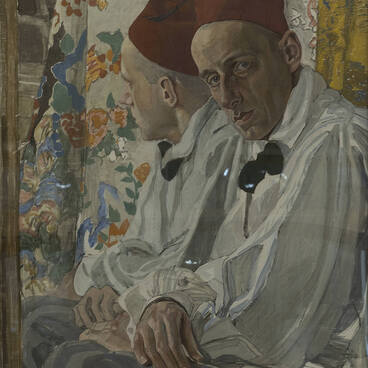It took several years to stage the drama “The Masquerade” by Mikhail Lermontov. The process lasted from 1911 to 1917. It was not the first collaboration between the director Vsevolod Meyerhold and the artist Alexander Golovin. Before “The Masquerade”, they staged a few classical and modern plays at the Alexandrinsky Theater and the opera “Orpheus and Eurydice” by Christoph Gluck at the Mariinsky Theater. Given the previous success, people were looking forward to their new play, and the press was eager to print any hints in relation to it.
Alexander Golovin was a member of the Mir Iskusstva art movement. He created over 4,000 drawings of stage sets, costumes and stage props for “The Masquerade.” The artist worked meticulously on the visual aspect of every detail and micromanaged the work process at the scene and sewing shops of the theater.
During their work on the “The Masquerade”, Vsevolod Meyerhold and Alexander Golovin proved to be a perfect team. At the director’s request, Golovin created a sophisticated system of curtains to put into practice a new way of transition: sometime in the middle of a dialogue the curtains were drawn, dividing the scene into episodes. The director’s idea was to place the characters on the proscenium and draw the curtain behind the performing actor.
Vsevolod Meyerhold managed to arrange ensemble acting to the rhythm of Lermontov’s poetry. The music for the play was composed by Alexander Glazunov. He wrote Nina’s song, the themes of Arbenin and the Stranger, and the quadrille, the polonaise and the mazurka dances for the ball scenes.
The premiere of the “The Masquerade” took place at the Alexandrinsky Theater on February 25, 1917, coinciding with the February Revolution. On their way to the theater that night, Meyerhold and Golovin were crossing the Nevsky Prospect with bullets swishing over their heads. “The Masquerade” turned out to be their last collaboration. The contemporaries wrote that, in a way, the choir singing in the scene with the main character’s funeral became a requiem for Imperial Russia.
The theater critic Konstantin Rudnitsky reflected upon the play,
Alexander Golovin was a member of the Mir Iskusstva art movement. He created over 4,000 drawings of stage sets, costumes and stage props for “The Masquerade.” The artist worked meticulously on the visual aspect of every detail and micromanaged the work process at the scene and sewing shops of the theater.
During their work on the “The Masquerade”, Vsevolod Meyerhold and Alexander Golovin proved to be a perfect team. At the director’s request, Golovin created a sophisticated system of curtains to put into practice a new way of transition: sometime in the middle of a dialogue the curtains were drawn, dividing the scene into episodes. The director’s idea was to place the characters on the proscenium and draw the curtain behind the performing actor.
Vsevolod Meyerhold managed to arrange ensemble acting to the rhythm of Lermontov’s poetry. The music for the play was composed by Alexander Glazunov. He wrote Nina’s song, the themes of Arbenin and the Stranger, and the quadrille, the polonaise and the mazurka dances for the ball scenes.
The premiere of the “The Masquerade” took place at the Alexandrinsky Theater on February 25, 1917, coinciding with the February Revolution. On their way to the theater that night, Meyerhold and Golovin were crossing the Nevsky Prospect with bullets swishing over their heads. “The Masquerade” turned out to be their last collaboration. The contemporaries wrote that, in a way, the choir singing in the scene with the main character’s funeral became a requiem for Imperial Russia.
The theater critic Konstantin Rudnitsky reflected upon the play,






